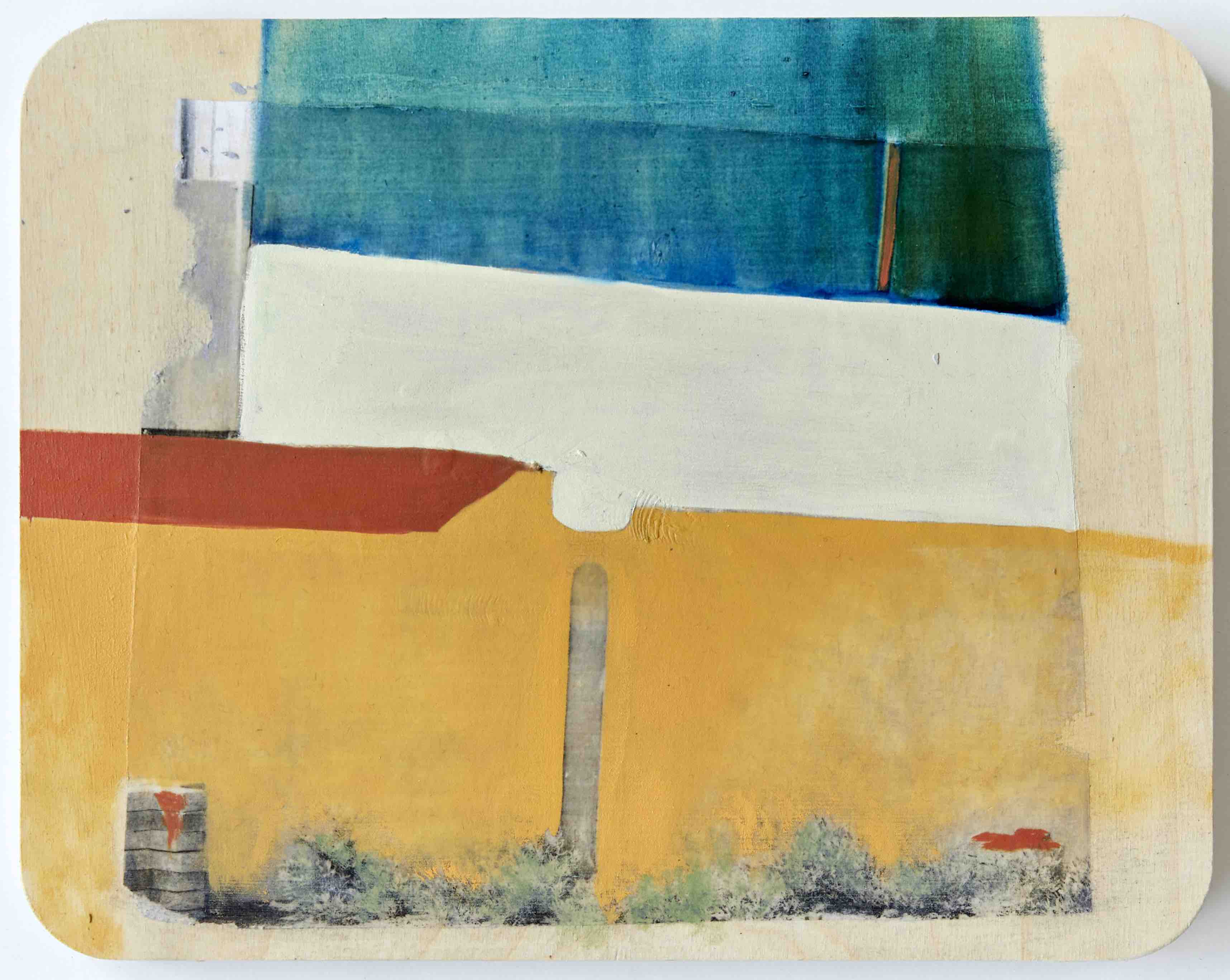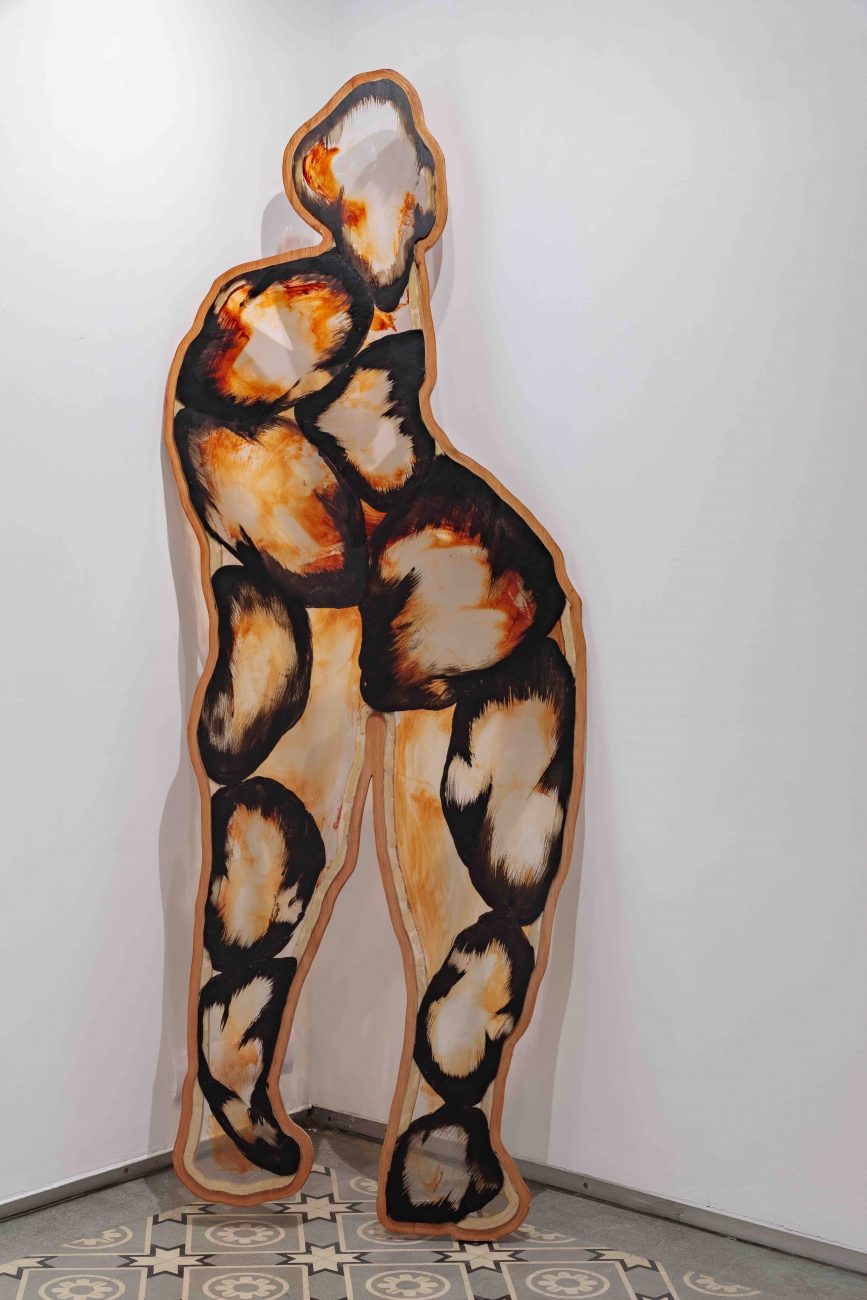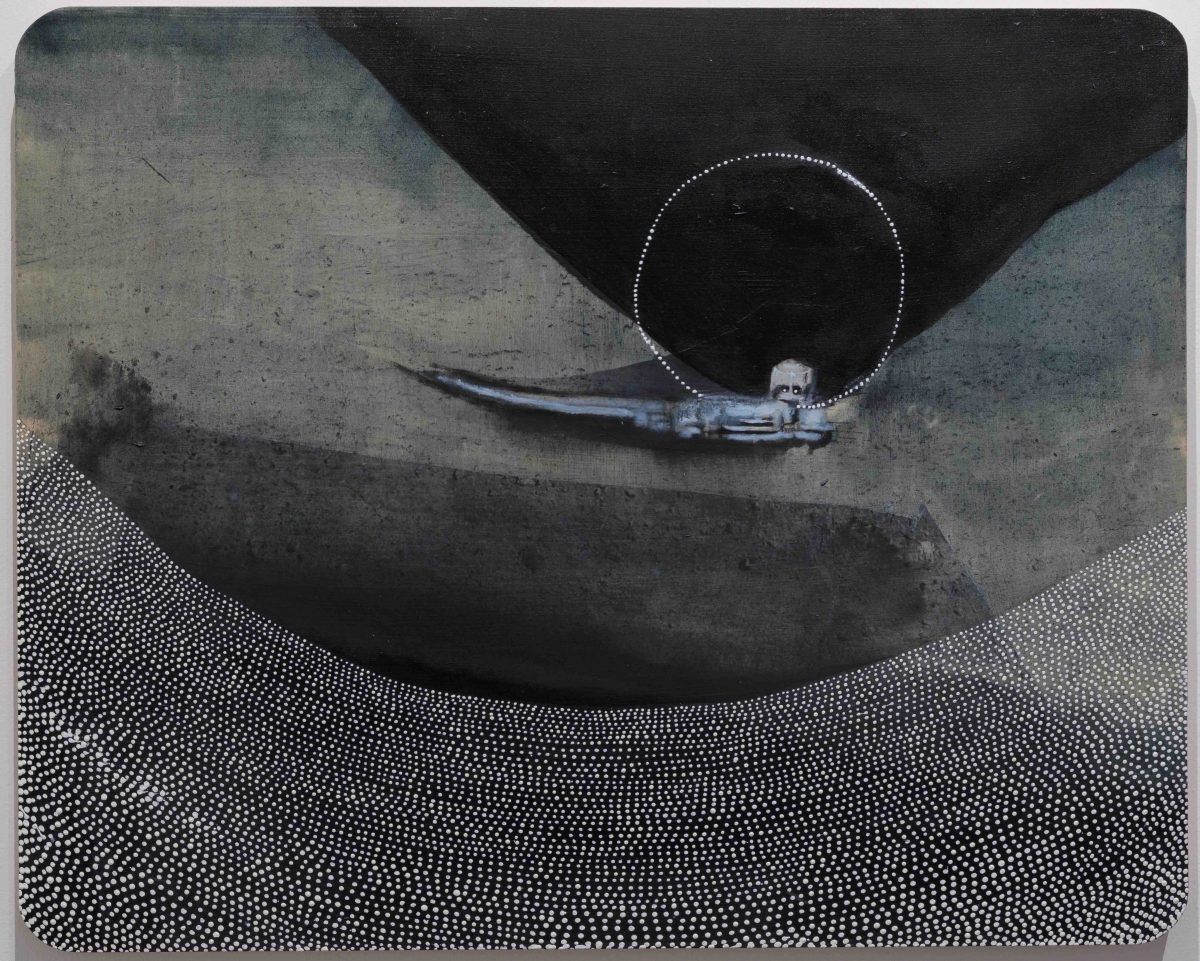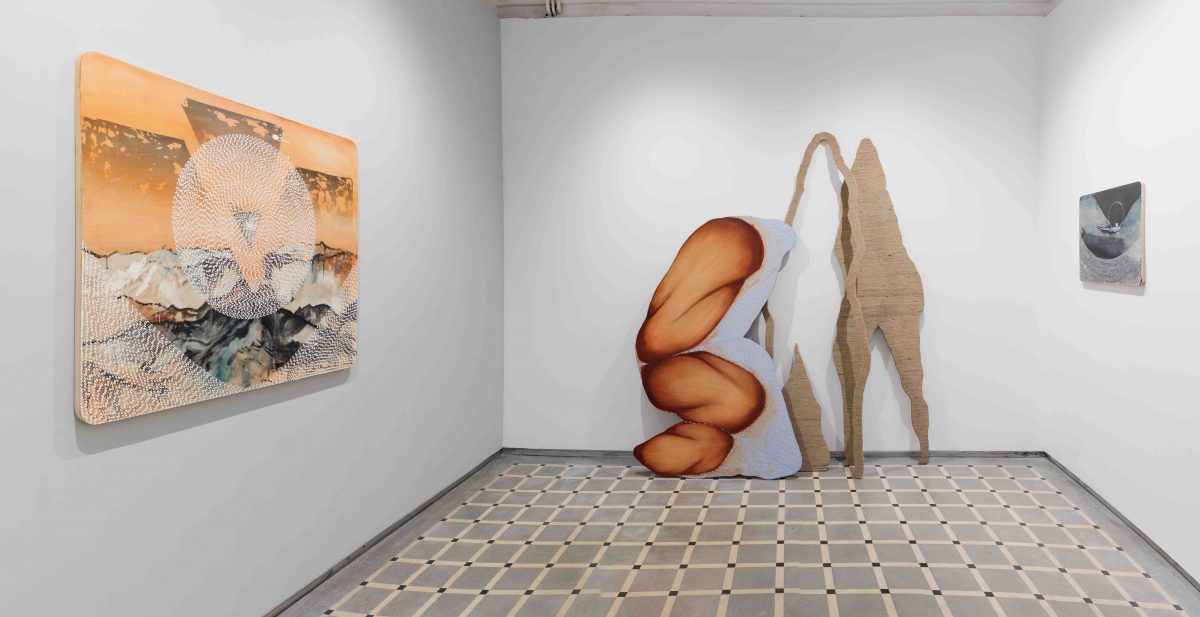
Showing at Experimenter, Kolkata, ‘Adorning Shadows’ by Radhika Khimji is an exercise in de-glaciation where the body is probed into a progressive exposition of impulses and states, thus resisting any regimented gaze. Evocative of human musculature, life-size cut-outs (titled Shifters) register as lumps of the human form—standing, squatting, or suspended in motion—punctuating the exhibition space like silent, but imposing, bystanders. Bereft of faces, the multimedia figures are arranged in various permutations, often collapsing into biomorphic queries in space. The marked absence of the head in Khimji’s silhouettes draws attention to the contortions of the constitutive fragmented parts; joined as if by an invisible string, the body seems to be directed by this precarious bind. The absence of the face also precludes any particularity of identity and utterance, taking the body instead into a realm of absolute (and simultaneous) anonymity and likeness. Perceptibly female, the figures are propped in the exhibition space against various surfaces. Without a uniform anchor, their context is constantly re-negotiated with alterations in the background. Dislocated, frozen, yet liquid in the way it spills beyond prescriptive contours, the body is placed in a perpetual state of ‘becoming’. Always performing a gesture against an external support, the bodies are imbued with the potential of a movement—one that may be dormant, camouflaging, or positioned on the precipice of activation.
A major part of the exhibition comprises Khimji’s work on birch plywood. Akin to the skin in texture, the wood offers an appropriate surface for experiments in the relationship between gesture and architecture. Using a definitive ground and frame, these works mimic architectural blueprints in saturated strokes. Her works on paper carry similar notations of places in the form of photographic transfers; the technical imperfections of the imprint impart tears and erosions to the base that are similar to tactile marks. This gesture of material transference imbues the work with an indexical referentiality, ultimately appropriating it into an amalgamation of matter and memory across past, present and future axes. Combining ink and embroidery, the works register as cartographic explorations of the artist’s impressions and extended imaginations across multiple scales of intimacy.

Khimji’s works play with scale in relation to space, often overwhelming the body of the viewer, and at other times, calling for close study through spatial compression between the eye and its surface. Each work is experienced in relation to its size. This determines whether, for instance, the embroidery feels private and suited to hold (and by extension, possess), or if the sculptural assemblage calls for an order of attention that necessitates distance. The body is imagined as both whole and part, the latter often enlarged for scrutiny. An expansive aluminium sheet—perforated and painted white—hangs in the middle of one of the exhibition rooms. With dangerously sharp edges and, in scale, towering over the viewer, the artist has interpreted the ‘dangler’ as labia. Hyper-sexualised and denigrated alike in mainstream representations, the labia are presented by the artist as a self-aware lattice—one that allows vision through and beyond itself, as well as injures if maltreated. Disembodied and flattened, this body part assumes both a threat and grandeur through its physical abeyance, occupying space and asserting presence by its own accord.
The perforation recurs in Khimji’s work as the more gestural “dot”—as paint, as puncture, and as cavity. The dot is used in controlled and repetitive strides, and populates landscapes and flesh alike. In varying densities, the dots create hypnotic patterns, illusions of movement, and an attendant transcendence on perusal. The use of the dot attests to the artist’s deliberate excision of the body as a representative figure, prodding the work towards an abstracted vocabulary. The layered movement towards a progressive density also attributes a sculptural quality to the two-dimensional works, perhaps pointing towards how identities are similarly constructed through a range of factors that accrue across contexts, sites, and specificities. The artist uses the punctured paper base for use on other drawings; even the material traces from the process of making are consumed into the work. The dots also serve to trace female sexuality through the feminist premise of the ‘void’. Its physical manifestation in the works is negotiated through an obsessive mark-making, foregrounding the female body as one that requires attentive (and intentional) navigation. A doorway in the gallery space assumes the outline of a ‘shifter’ in the form of jute threads (that evoke dermal affinity), requiring the visitor to literally walk through her body over the threshold, thus mobilising an absence through the act of passage.

The dots attribute movement to Khimji’s anthropomorphic depictions of matter. Assuming the contours of a landscape, the dimensions of her paintings and collages register as extensions of the Shifters, as the female body is juxtaposed with diagrammatic inscriptions for construction sites. A simultaneous juxtaposition of the public and the private is established through the lens of ownership, as the body is foregrounded in its vulnerability to invasion, capture, and disintegration, just as a building would be. This impulse extends from Khimji’s general body of work that investigates the politics of displacement and embodiment in postcolonial landscapes, and her own hyphenated identity. Khimji’s work animates a gaze on the body that conforms to, and in tandem, deviates from reductive tropes. Through an exercise in de-sexualisation, the female nude is stripped of its historical weight as the artistic ideal, and re-examined as a body in transit—a revelatory, yet equally opaque script of desires. Shifting in shape and across sites, the figures are functional in the interstitial spaces between meaning and non-meaning, like bodies in both formal and cognitive flux. In effect, the artist visibilises a corporeality that registers as points in space. The exhibition then explores the many possibilities for a generative collapse, acknowledging porous subjectivities and activating a lens on the female body beyond consolidated regimes of image-making.

‘Adorning Shadows: Radhika Khimji’, Experimenter – Ballygunge Place, 23 October–24 December 2021.














